Basic Information
Observation Details
Observation Date:
April 10, 2020Submitted:
April 10, 2020Observer:
SAC - LundyZone or Region:
Sawtooth and Western Smoky MtnsLocation:
Frenchmans, 7400-9400'Signs of Unstable Snow
Recent Avalanches?
YesCracking?
None ExperiencedCollapsing?
IsolatedSnow Stability
Stability Rating:
FairConfidence in Rating:
ModerateStability Trend:
SteadyBottom Line
The recent warming and sunshine have lead to a wet snowpack surface on all but upper elevation, due north-facing slopes. As a result, wet slides continue to be the primary concern.
Media/Attachments

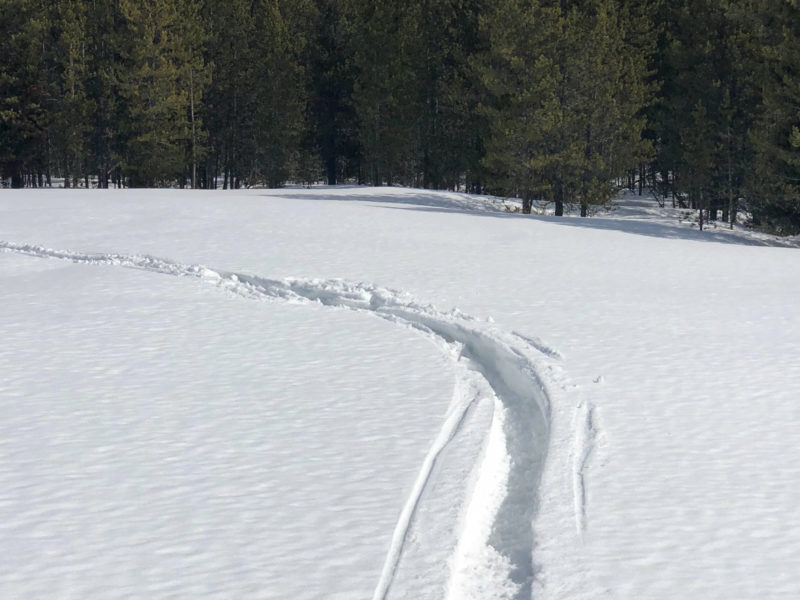
Advanced Information
Weather Summary
Cloud Cover:
Mostly SunnyWind:
Light , WAnother hot, sunny day. A few high, thin clouds moved in in the afternoon.
Avalanche Observations
| # | Date | Location | Size | Type | Bed Sfc | Depth | Trigger | Comments | Photo |
|---|---|---|---|---|---|---|---|---|---|
| 3-4 |
West facing paths just up canyon of Frenchman's 2014 fatality site. W 8600-8800 |
D2 | WL | N-Natural | These appeared to be wet loose, the starting zones were convoluted and hidden by trees but I did not see any crowns. Gained significant mass as they moved into wetter, lower elevation snow. |
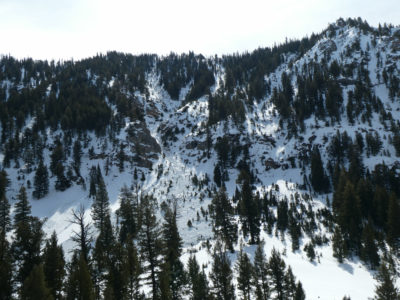
|
|||
| 2 |
Up canyon of Frenchman's 2014 fatality site. NW ~8000 |
D2 | WS | N-Natural | These wet slabs look like the ran yesterday and appeared to be triggered by wet loose from above. Did not propagate that wide. May have run in debris cones below cliffs. |
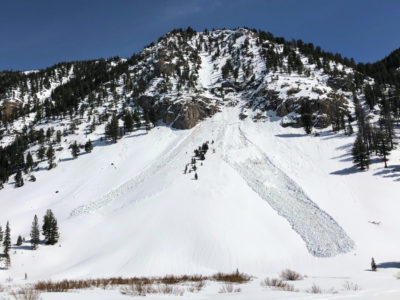
|
|||
| 1 |
Upper Frenchmans W 9200 |
D1 | WS | N-Natural | Presumably this is a wet slab but can't say for sure. Small, odd pocket. I did not see anything else like this. |
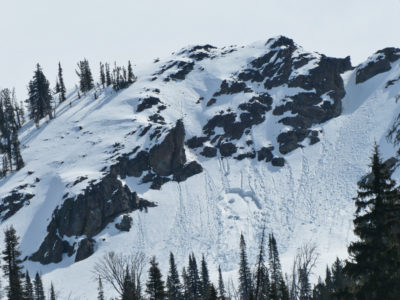
|
I'm only listing the significant or interesting slides I saw. I glassed numerous other wet loose slides in the surrounding peaks, some to D2 in size. These all fit the pattern of what we've seen elsewhere.
Snowpack Observations
The lower elevation (< about 7500') snowpack was barely supportable on a sled. Blipping the throttle at a standstill would sink the track to the ground. Boot pen was to the ground (60-80cm). Conditions were more supportable at middle and upper elevations, where boot pen was generally around 30cm and ski pen was about 10cm. I was surprised how much I was staying on top, even late in the day.
The snow surface was wet everywhere except on due N aspects > 9000'. Even due N at 9400' was a bit moist. I saw a lot of rollerballing on upper elevation, NW slopes.
@8300', NE, 25*: HS 190. Top 10cm was wet, then the next 50-60cm was moist. Below that the snow was still dry. From 30cm down, the snowpack was 1F to P. I did not see any obvious weak layers, and I got an ECTX even with very hard hitting. Tipping the column over did not produce any shears in the top 1m.
@8900', N: HS 235. Top 2-3cm was moist and then dry below. Similar to the first pit, the top 1m was 1F to P below the surface snow. There was a hint of a softer layer down about 95cm, but the hardness difference was subtle. That was the only "weak" layer I could pick out, and I also got an ECTX even with very hard hitting.
From these two pits, it appears the past several days of heat have consolidated the upper snowpack and have helped to heal the persistent slab problem.
Avalanche Problems
| Problem | Location | Distribution | Sensitivity | Size | Comments |
|---|---|---|---|---|---|
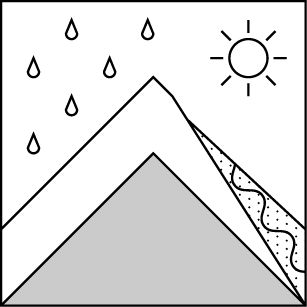 Wet Loose
Wet Loose
|
|
Comments: It seemed like you could have gotten some wet snow to move on most slopes over about 40* except upper elevation due N. |
I did not see evidence of the persistent slab problem in this location.
Terrain Use
I avoided avalanche terrain.
